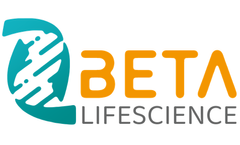Cancer Cell Destruction Articles & Analysis: Older
12 articles found
Gene editing has emerged as a transformative tool in the field of biomedical science, with significant implications for the treatment of various diseases. The primary focus is on harnessing this technology for modifying primary T cells, a type of white blood cell crucial for the immune response. This approach has opened new avenues for immunotherapy, providing hope for treating conditions like ...
Gene delivery is a therapeutic strategy that’s revolutionizing biotechnology and pharmaceuticals. It involves the delivery of new genetic molecules into target cells to treat diseases. This technology has the implicit to revise the treatment of inherited genetic disorders, cancer and other intractable driseases. Scientists are using a variety of gene delivery strategies to insert new ...
They are generally proteins or polysaccharides found on the surface of pathogens, such as viruses, bacteria, or cancer cells. In the environment of cancer, antigens may be specific to tumor cells and are known as tumor-specific antigens (TSAs) or tumor-associated antigens (TAAs). Antibodies, also known as immunoglobulins, are ...
B7-H3 is expressed in limited amounts in normal tissues but is highly expressed in various cancers, including prostate cancer cells. It is involved in the formation and development of the tumor microenvironment (TME) and plays an important role in regulating immune responses. Researchers state that enoblituzumab, as a new treatment approach, ...
Gold nanocages can absorb light and heat, creating a photothermal effect that can kill cells. In fact, people use this effect to kill cancer cells. What are the differences between gold nanocages and nanorods? ...
Antibody-drug conjugates (ADCs) usually consist of monoclonal antibodies (mAbs) covalently linked to cytotoxic drugs via chemical linkers. With high specific targeting ability and strong killing effect, it has achieved precise and efficient removal of cancer cells, and has become one of the hot spots in the development of anticancer drugs. In 2000, the FDA first approved the ADC drug Mylotarg ...
Background Tumor immunotherapies compose immune checkpoint inhibitors, therapeutic antibodies, tumor vaccines, cellular therapies, and so on. However, each has its own set of issues, such as the fact that CAR-T therapy is an individual therapy that is costly; immune checkpoint inhibitors are highly effective, but only in some patients. The researchers expose us to a radically different way of ...
January 6, 2022—Researchers at the Perelman School of Medicine at the University of Pennsylvania published a research paper in Science titled: CAR-T cells produced in vivo to treat cardiac injury. Heart damage or inflammation can induce fibroblasts to overproduce fibrous material, causing cardiac fibrosis, which hardens the heart muscle and impairs heart function. Heart failure, liver ...
In recent years, antibody-drug conjugates (ADCs) have been widely sought after due to their excellent clinical performance and market returns. ADC drugs are composed of three parts: antibody, effector molecule (Payload, usually cytotoxic agent) and linker. Compared with traditional drugs, ADC drugs have obvious advantages in improving targeting and reducing side effects. 1. Global ADC listing ...
Considerable investment into cancer research has led to the development of remarkable new therapies, which have greatly improved therapeutic outcome for the countless individuals diagnosed with cancer. Until recently, almost all therapies that were granted clinical approval were small molecules. However, biotechnological advances in the last several decades have made it possible to develop ...
Chimeric antigen receptor T-cells (CAR-T) are one of the first clinically approved therapies to take full advantage of the most significant advancements in immunology and genetic engineering. The resulting therapeutics have been shown to produce remission rates exceeding 80% in patients with CD19+ B-cell lymphoma, making them nothing short of remarkable [1]. Unfortunately, CAR-T cells seem ...










